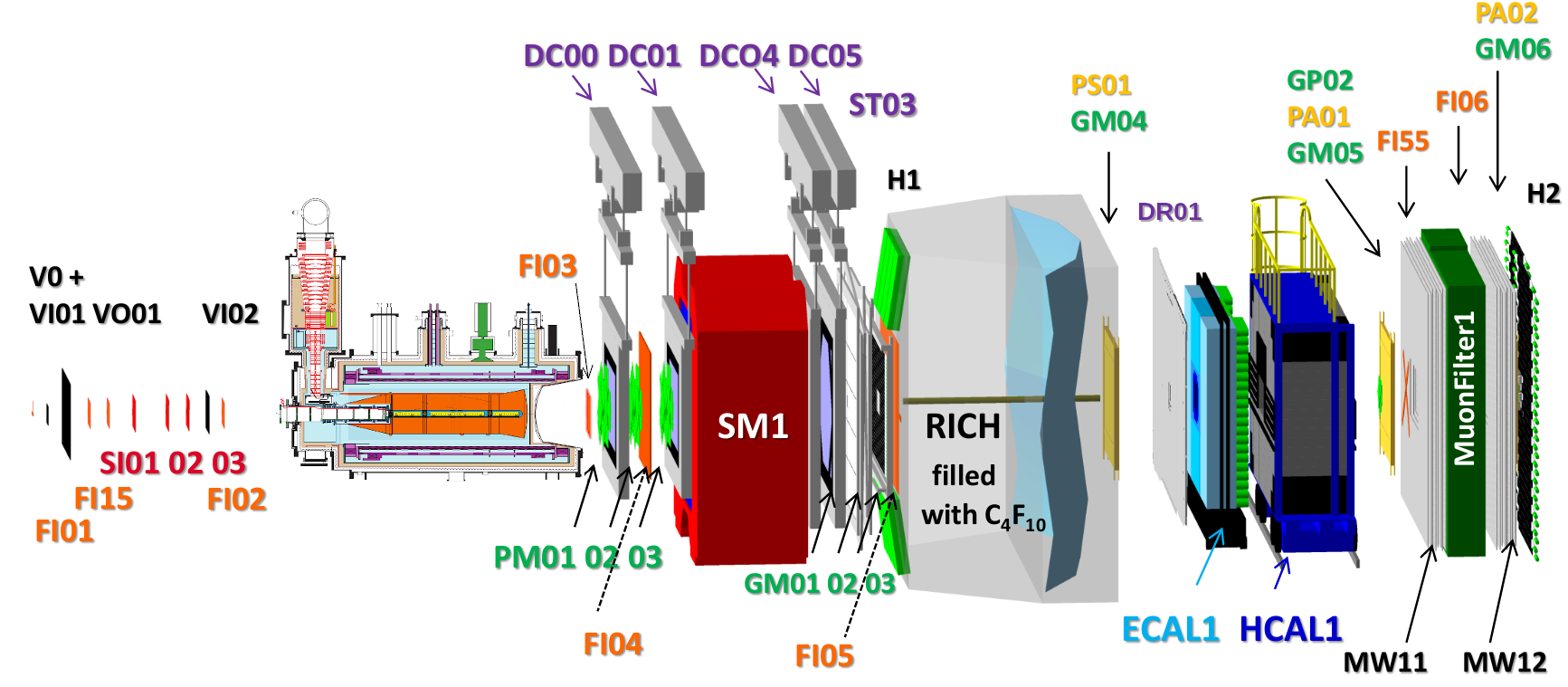Important contacts
Calling from outside CERN:
- Landline numbers (7....) or CERNphone (6....): dial +41 22 76 plus all five digits.
- Mobile numbers (16....): dial +41 75 411 plus last four digits.
The run is aimed at Semi-Inclusive Deep-Inelastic Scattering (SIDIS) of muons off transversely polarised 6LiD target, as described in our proposal or in this talk. The experiment is located in the Experimental Hall North 2 (EHN2), building 888, on the Prévessin site of CERN.
| 07.06. | Physics data taking started. | |
| 20.05. | Regular Shifts started. [Shifts] | |
| 09.05. | Daily Meetings started. [Meetings] | |
| 25.04. | Reduced Shifts started. | |
| 22.04. | Weekly Meetings started. [Meetings] | |
| 23.02. | The 2022 run is at the doorstep, this page is getting updated! | |
All news are shown (hide news older than 0 days).
| 11.04. | Commissioning | First beams for NA commissioning. |
| 25.04. | Beam to NA for physics | NA64mu main user; possible spectrometer partial commissioning with beam. |
| 16-17.05. | Changover | Changeover from NA64mu to COMPASS. No beam until Tuesday 17.05 at 18:00. Survey. |
| 17.05. | First beam tuning | First beam tuning and steering. |
| 18-19.05. | AMBER tests | Days dedicated to AMBER p-bar production tests. |
| 20.05. | Commissioning | First day with COMPASS as exclusive user of the beam. Detector and trigger commissioning with muon/hadron beam. |
| 25.05. | Survey | During the MD, for the detectors not surveyed on 16-17/05. |
| 01.06. | Goal | Start of the data taking for physics. |
| 07.06. | W01 | Start of the first data taking period. |
| 22.06. | W02 | Start of the second data taking period. |
| 06.07. | W03 | Start of the third data taking period. |
| 20.07. | W04 | Start of the 4th data taking period. |
| XX.11. | End of the run |
Calling from outside CERN:

COMPASS setup, upstream half

COMPASS setup, downstream half
The experimental setup consists of a beam telescope, solid-state transversely 6LiD target and a two-stage magnetic spectrometer. The spectrometer has wide angular coverage and robust tracking. Particle identification is ensured by muon filters and a RICH detector. It contains also electromagnetic and hadronic calorimeters.